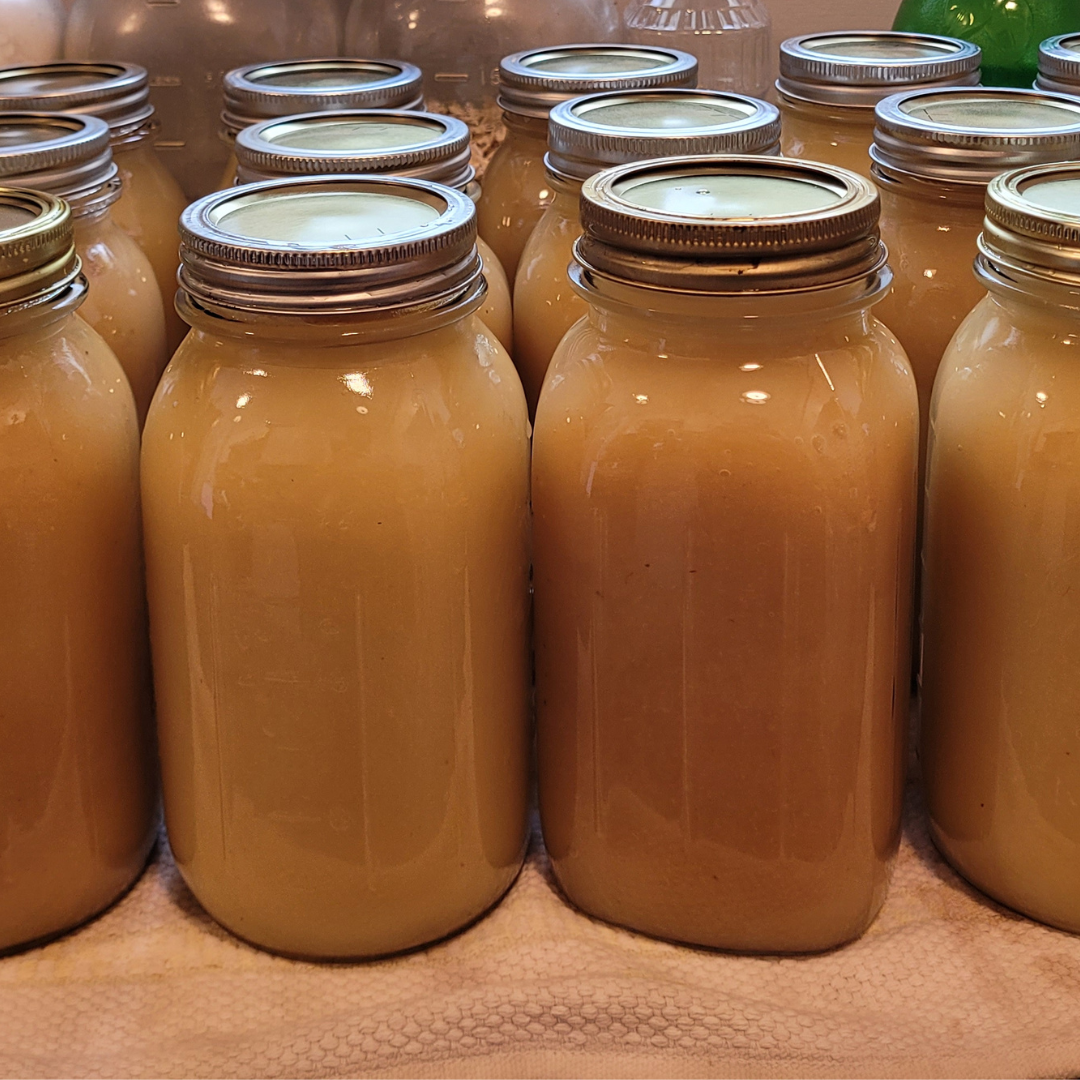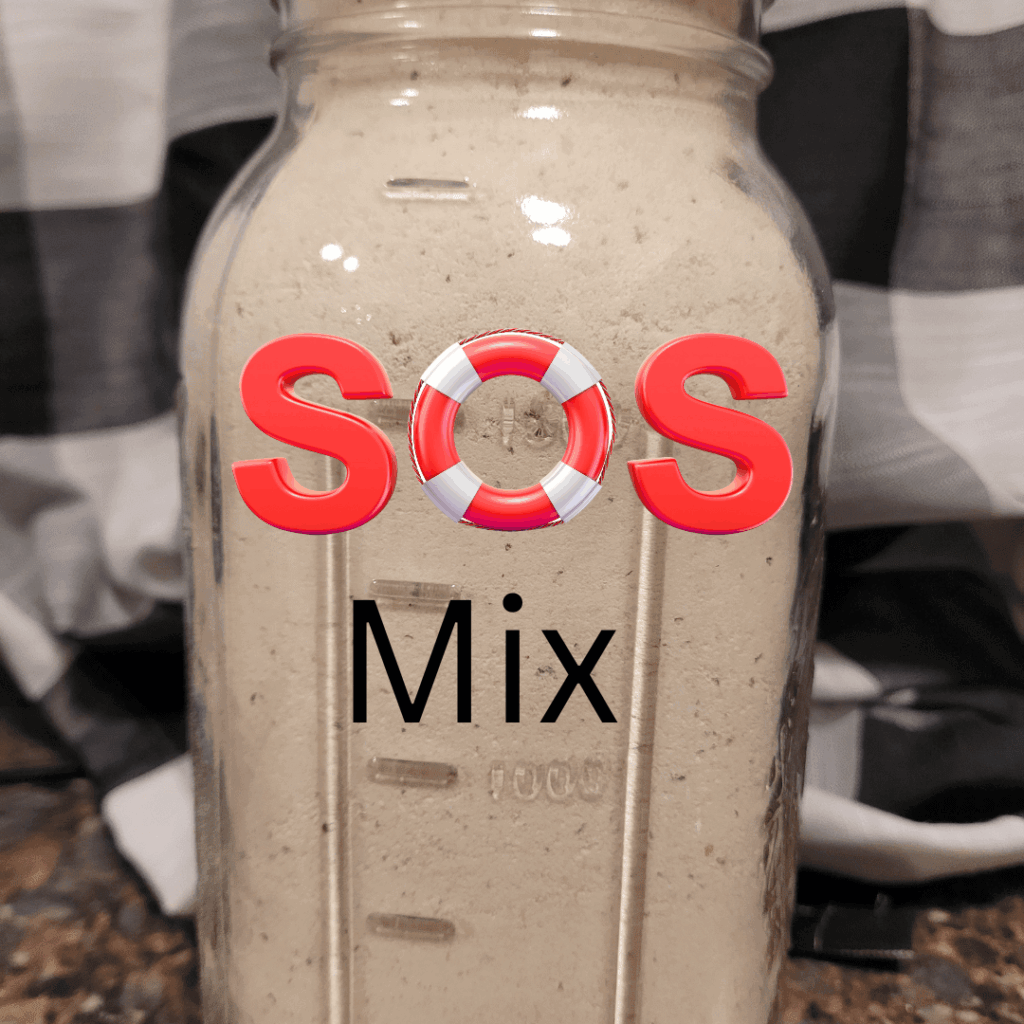Canning applesauce recipes are a simple and delicious way to preserve fresh apples. This step-by-step guide will help you stock your pantry with homemade applesauce that’s perfect for enjoying all year long!
There’s something truly special about the smell of apples cooking on the stove, filling your home with warmth and sweetness. With these canning applesauce recipes, you can capture that cozy feeling and turn it into jars of homemade goodness to enjoy all year long. Whether you’re preserving the bounty from your backyard orchard or fresh apples from the farmer’s market, canning applesauce is a simple way to make the most of the season.
Canning applesauce isn’t just about preserving food—it’s about creating memories. Each jar is a little piece of comfort, perfect for breakfast on a chilly morning, a sweet snack for the kids, or a thoughtful homemade gift for friends and family. The process is surprisingly easy, and even beginners can feel proud of their efforts once the jars are safely sealed and lined up on the pantry shelf.
In this guide, I’ll walk you step-by-step through these easy canning applesauce recipes, from selecting the right apples to the final sealing of your jars. With the right tools, a little patience, and a dash of love, you’ll have a pantry full of delicious, homemade applesauce that tastes like home in every spoonful.
This is a pinnable post. Tap or hover over any image in this post to pin to your Pinterest Boards.
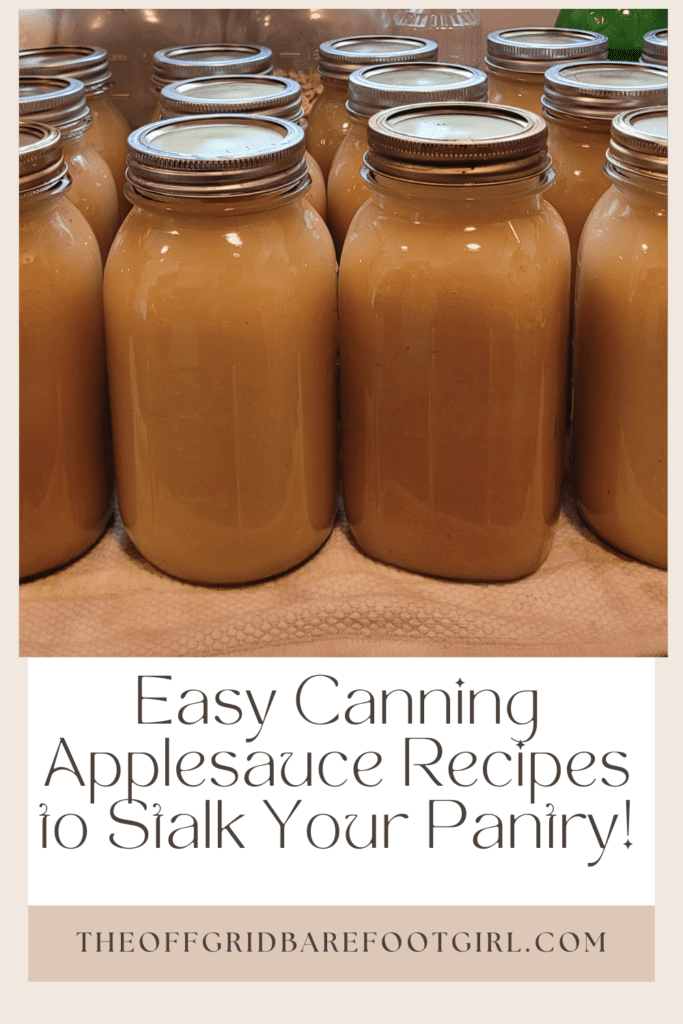
Canning Applesauce Recipe Tutorial
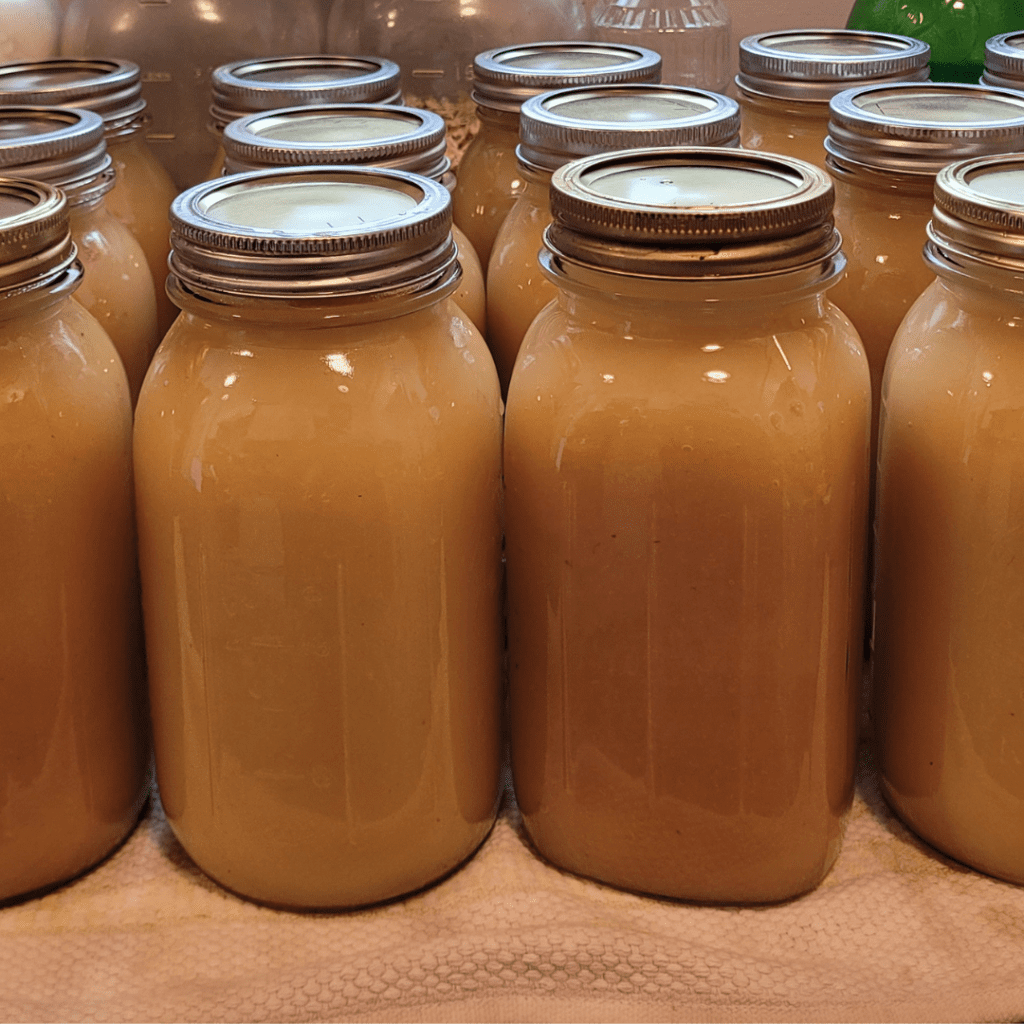
So, you’ve got a bunch of apples and a yearning for some DIY kitchen adventures. Canning applesauce might just be your new jam! Literally, because you can spread it on toast! Let’s get busy turning fresh apples into delicious pantry staples.
Why Canning Applesauce is a Great Skill to Learn
Sure, you could buy applesauce at the store, but where’s the fun in that? Canning your own applesauce gives you control over the ingredients, lets you customize flavors, and makes you an all-around kitchen wizard. Plus, you’ll impress your friends with your homemade goodness!
Benefits of Homemade Applesauce
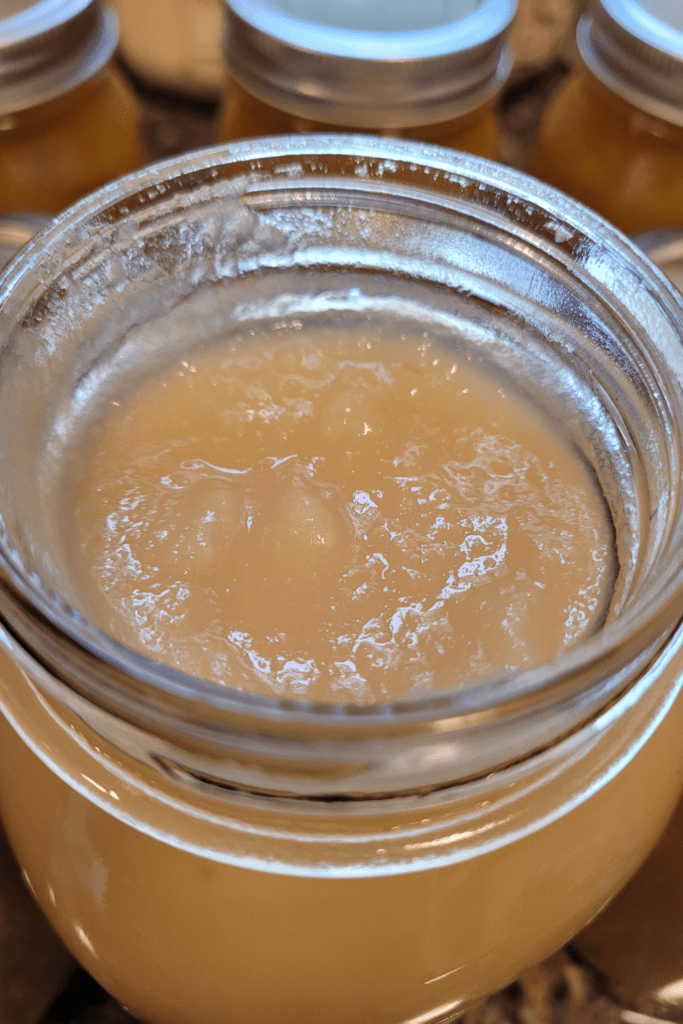
If you’ve only had store-bought applesauce, get ready to have your taste buds dazzled by the homemade version. But it’s not just about flavor – homemade applesauce packs a punch when it comes to nutrition too.
Nutritional Advantages of Homemade vs Store-Bought
Homemade applesauce is often lower in sugar and can retain more of those apple-y nutrients since you’re in charge of what goes into it. Say goodbye to mystery ingredients and hello to a healthier, tastier snack option!
Essential Tools and Ingredients for Canning
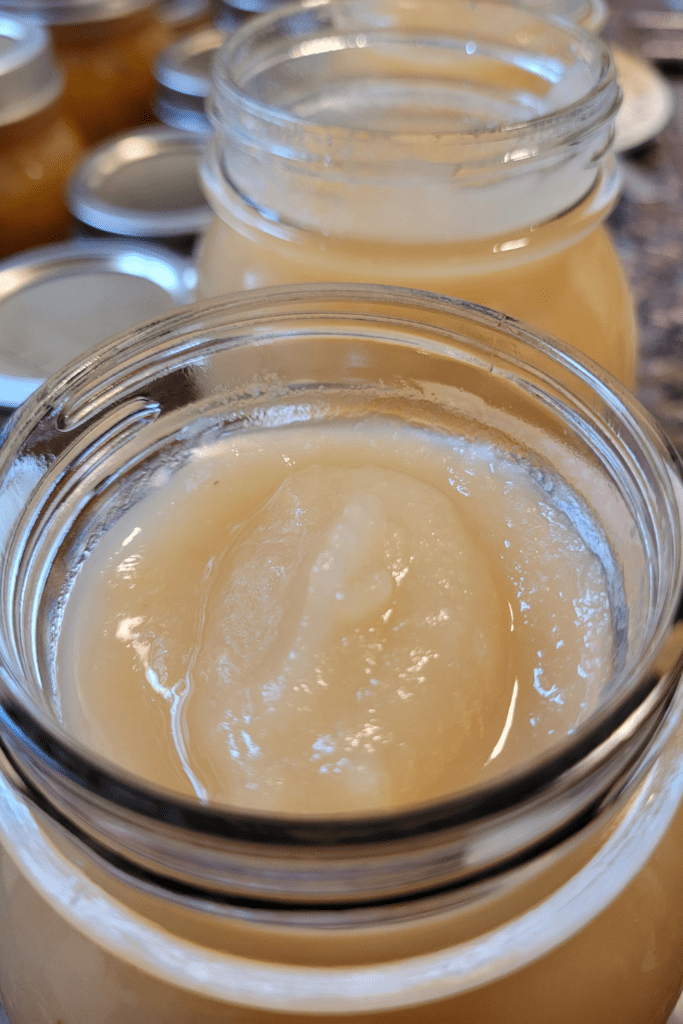
Before you start your applesauce adventure, it’s essential to gear up with the right equipment and, of course, the star of the show – apples!
Must-Have Equipment for Canning Applesauce
Think large pots, jars, tongs, and your canning kit. You might even want to grab your warm spices from the racks!
Choosing the Best Apples for Canning
Not all apples are created equal when it comes to sauciness. Look for varieties that hold up well when cooked down. It’s all about that perfect balance of tart and sweet in your final product.
When it comes to canning homemade applesauce, here are some of the best apple varieties to use:
- McIntosh: Known for its sweet and tangy flavor, McIntosh apples break down easily when cooked, making them ideal for creating a smooth applesauce texture.
- Gala: Gala apples are sweet and aromatic, adding a pleasant fragrance and taste to your applesauce.
- Jonathan: These slightly tart apples hold their shape well when cooked, providing a nice balance of texture in the applesauce.
- Golden Delicious: With their honeyed sweetness, Golden Delicious apples are great for creating a naturally sweetened applesauce without the need for added sugar.
- Cortland: Cortland apples are juicy and slightly tart, making them a good choice for adding a refreshing zing to your applesauce.
- Gravenstein: These heirloom apples have a perfect combination of sweet and tart flavors, ideal for creating a well-balanced and flavorful homemade applesauce.
Step-by-Step Guide to Canning Applesauce
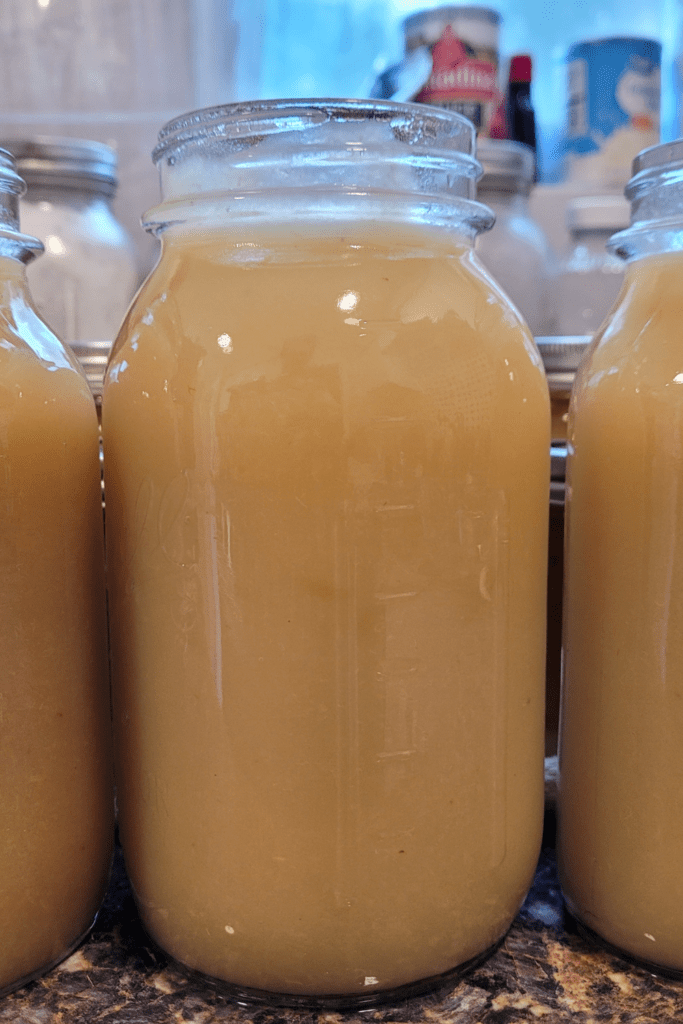
Ready to get your hands (and kitchen) a little messy? Let’s walk through the apple-to-jar journey step by step.
First, here’s what you will need:
Fresh Apples: The star of the show that makes up the recipe!
Water: Just enough to help the apples cook down.
Lemon Juice: To add a hint of brightness, balance the sweetness of the apples, and prevent oxidation, keeping the applesauce fresh and vibrant in color.
Sugar: To enhance the sweetness of the apples, balance the natural tartness, and contribute to the overall flavor profile of the sauce.
Cinnamon: To add warmth, depth of flavor, and a hint of spice that complements the sweetness of the apples, creating a comforting and aromatic sauce.
Preparing the Apples
Peel, core, and slice those apples like a pro. Bonus points if you can do it in one swift motion! Channel your inner fruit ninja! Or just grab your knife and cutting board and put on some good music!
Cooking and Mashing the Apples
Simmer those apple slices until they’re soft and mashable. Break out your potato masher or immersion blender and give those apples a good squish.
PRO TIP: Taste testing is highly encouraged at this stage!
Filling and Sealing Jars
It is now time to fill your jars with your secret homemade awesomesauce, er um, I mean applesauce!
- Prepare the Jars: Wash the jars, lids, and rings in hot, soapy water. Rinse thoroughly to ensure they are clean.
- Fill the Jars: Using a canning funnel, ladle the hot applesauce into the jars, leaving about ½ inch of headspace at the top.
- Remove Air Bubbles: Slide a non-metallic spatula or chopstick around the inside of the jar to remove any air bubbles trapped in the applesauce.
- Wipe the Jar Rim: Using a clean, damp cloth, wipe the rim of the jar to ensure it is clean and free of any applesauce residue.
- Apply the Lid and Ring: Place a lid on top of the jar, then screw on the band until fingertip tight. Do not over-tighten.
- Process the Jars: Place the filled and sealed jars in a boiling water canner, ensuring they are fully submerged with water covering the jars by at least 1-2 inches.
- Bring to a Boil: Cover the canner with a lid and bring the water to a boil. Process the jars according to the recommended processing time for your altitude and jar size.
- Remove and Cool: Once processed, carefully remove the jars from the canner and place them on a towel-lined countertop. Allow the jars to cool undisturbed for 12-24 hours.
- Check the Seal: After cooling, check the seals by pressing down on the center of the lid. If the lid is firm and does not flex, the jar is sealed.
- Label and Store: Label the sealed jars with the date and contents, then store them in a cool, dark place for long-term storage. Enjoy your delicious homemade applesauce whenever you like!
Flavor Variations and Additions
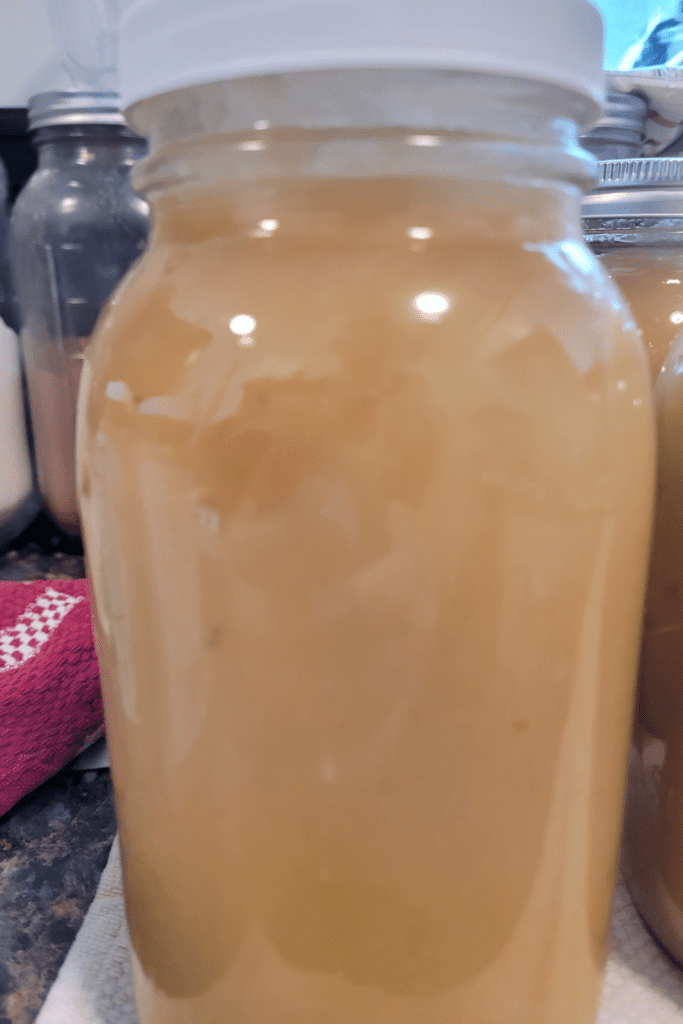
Adding Spices for a Flavor Boost
Spice up your canned applesauce by adding cinnamon, nutmeg, or even a dash of cloves for a warm and aromatic twist. Experiment with different spice combinations to create your signature applesauce flavor.
Experimenting with Different Sweeteners
Aside from traditional white sugar, try sweetening your applesauce with brown sugar, honey, or maple syrup for a unique taste profile. You can also opt for healthier alternatives like stevia or agave nectar to satisfy your sweet tooth guilt-free.
Storing and Preserving Canned Applesauce
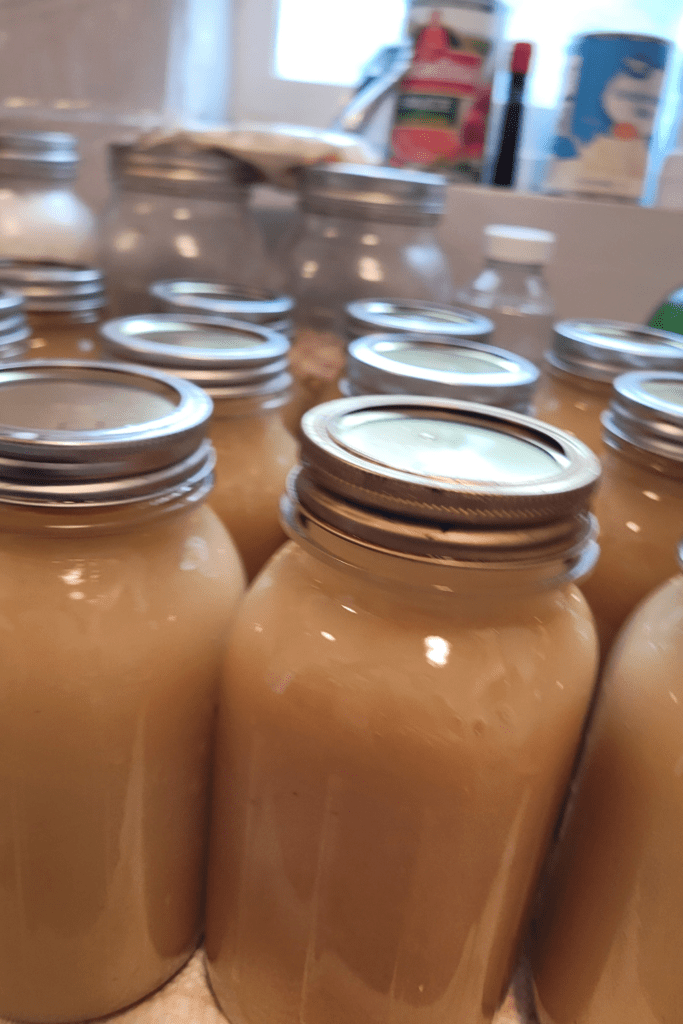
Proper Storage Techniques for Long-Term Preservation
To ensure your canned applesauce stays fresh, store it in a cool, dark place away from direct sunlight. Properly sealed jars can last up to a year or more, but always check for signs of spoilage before consuming.
Creative Ways to Use Canned Applesauce
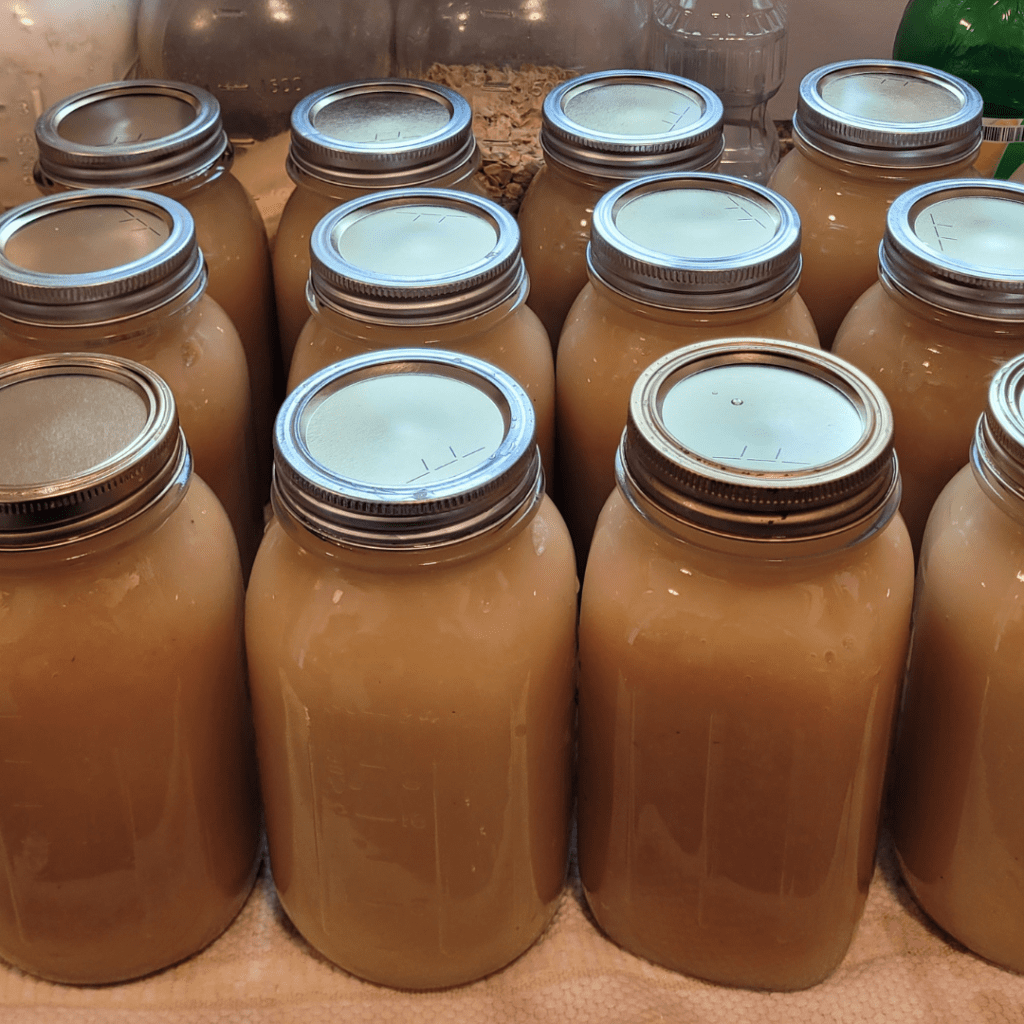
Using Applesauce in Baking Recipes
Substitute applesauce for oil or butter in your baking recipes to reduce fat content while adding moisture and flavor. It works particularly well in muffins, cakes, and cookies, yielding deliciously soft and moist results.
How to Use Applesauce As Substitutes In Your Baking Recipes!
Using applesauce as a substitute in baking recipes can not only add moisture and natural sweetness to your baked goods, but also reduce the amount of fat in the recipe. Here’s how you can use applesauce as a substitute in baking:
- Replace Oil or Butter: Substitute applesauce for oil or melted butter at a 1:1 ratio. For example, if a recipe calls for 1 cup of oil, you can use 1 cup of applesauce instead.
- Reduce Sugar: Applesauce adds natural sweetness to baked goods, allowing you to reduce the amount of sugar in the recipe. For every cup of sugar, you can typically replace it with ½ to ¾ cup of applesauce. Keep in mind that this may alter the texture and sweetness of the final product.
- Add Moisture: When using applesauce as a substitute, be aware that it adds moisture to the recipe. You may need to slightly reduce the amount of liquid in the recipe to compensate for this extra moisture.
- Consider Flavor: Applesauce has a mild, apple flavor that can complement many baked goods. It works well in recipes like muffins, cakes, and quick breads where the apple flavor can enhance the overall taste.
- Adjust Baking Time: When using applesauce as a substitute, you may need to adjust the baking time slightly. Keep an eye on your baked goods and use a toothpick to check for doneness.
- Experiment: Baking is both a science and an art, so don’t be afraid to experiment with using applesauce in your favorite recipes. Start by replacing a portion of the fat with applesauce and see how it affects the texture and taste of the final product.
By using these tips, you can easily incorporate applesauce into your baking recipes to create healthier and more flavorful treats. Enjoy the benefits of this versatile ingredient in your baking adventures!
Incorporating Applesauce into Savory Dishes
Get adventurous with your applesauce by using it as a glaze for roasted meats, a marinade base for chicken, or a topping for grilled vegetables. Applesauce has natural sweetness and tanginess that can elevate savory dishes to a whole new level.
Tips for Successful Canning
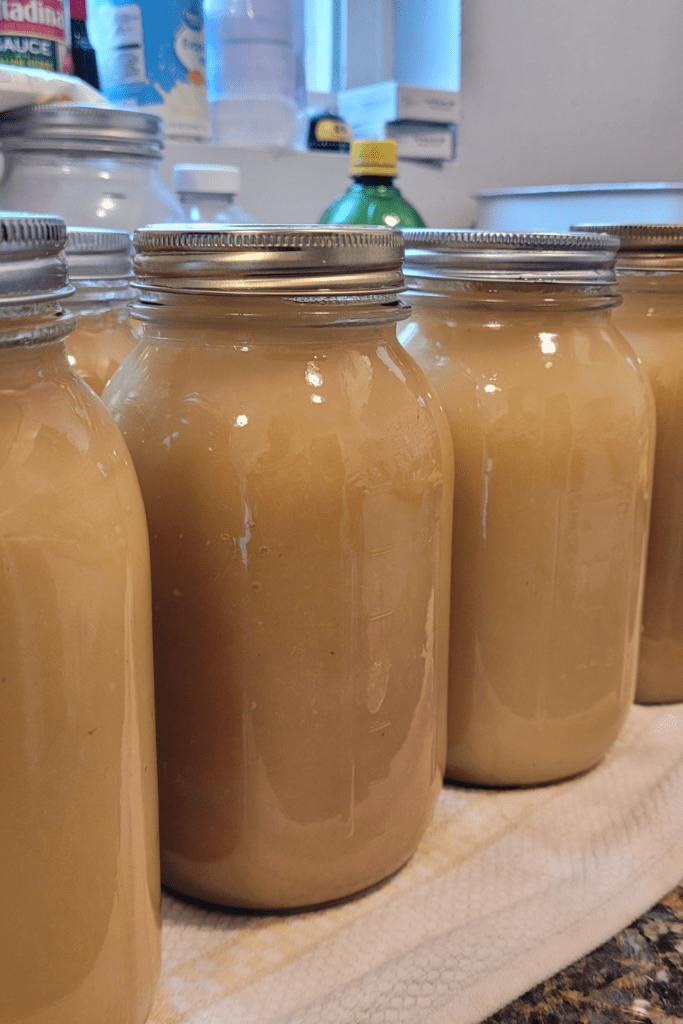
Common Mistakes to Avoid When Canning Applesauce
Avoid overfilling jars, not allowing enough headspace, or skipping the hot water bath canning process. Remember, canning is a science, so follow recipes and guidelines carefully to ensure safe and tasty results.
As you set out on your canning adventure and fill your pantry with jars of homemade applesauce, you are not just preserving a seasonal fruit, but also creating a versatile ingredient that can elevate your dishes throughout the year.
With proper storage techniques and a bit of creativity, your canned applesauce will be ready to enhance your baking, cooking, and snacking experiences. So go ahead, stock up on apples, gather your canning supplies, and enjoy the fruits of your labor as you savor the taste of your homemade applesauce creations!
Try Homemade Pear Sauce for a Sweet Twist
If you love the idea of stocking your pantry with homemade fruit sauces, you’ll want to check out my pear sauce recipes, too. Just like applesauce, pear sauce is simple to make, naturally sweet, and perfect for enjoying on toast, in oatmeal, or straight from the jar. These recipes guide you through easy steps to create smooth, flavorful pear sauce that pairs beautifully with your homemade applesauce collection.
Conclusion
I hope you are inspired to bring the taste of homemade goodness into your pantry. Preserving the harvest through simple and sustainable methods not only allows you to enjoy the flavors of fresh apples year-round, but also brings a sense of accomplishment and connection to your food.
Whether you’re a seasoned canner or new to the art of preserving, making applesauce at home is a rewarding experience that can be shared with loved ones and enjoyed in countless recipes. So take a leap into the world of canning, stock your pantry with jars of sweet and spiced applesauce, and savor the taste of your efforts with each delicious spoonful.
May your pantry be filled with the warmth and comfort of homemade applesauce, reminding you of the beauty of seasonal harvests and the joy of creating something wholesome and nourishing with your own hands. Here’s to embracing the simple pleasures of canning and preserving, one jar of applesauce at a time!
Resources: Here are some helpful resources for further information.
- Easy 4 Ingredient Berry Sauce – By A Plantiful Path
- Fruit Sauce, Two Ways – By The Bittman Project
- Fresh Fruit Sauce Recipe – By Allrecipes
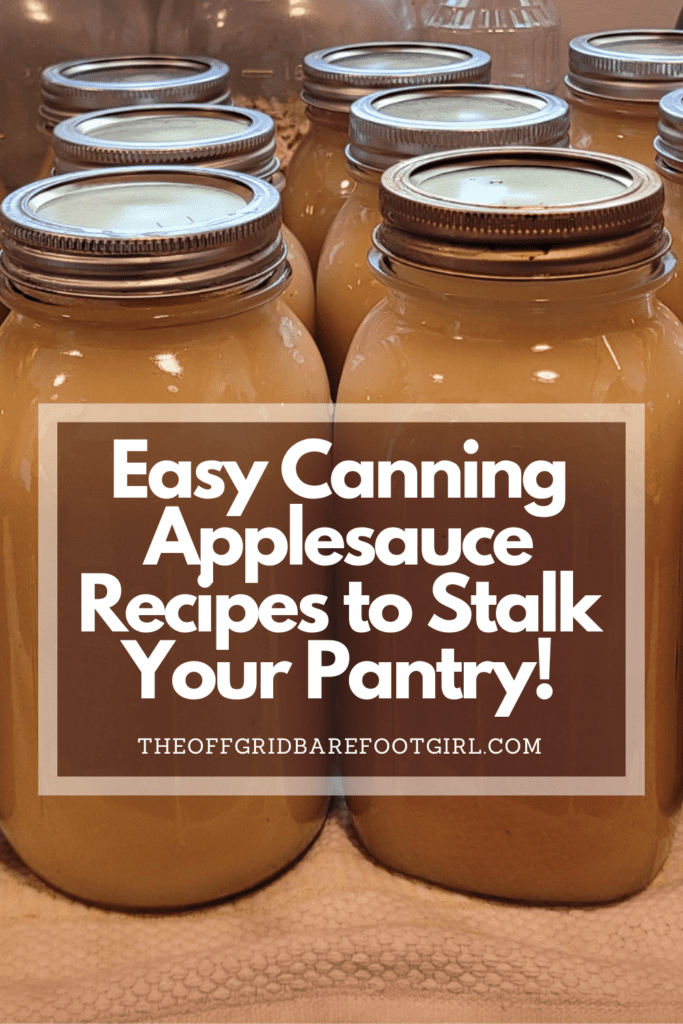
Frequently Asked Questions
1. Can I use any type of apple for making applesauce?
While you can use various apple varieties, some popular choices for applesauce include McIntosh, Gala, and Golden Delicious. Experiment with different types to find the flavor and texture you prefer.
2. Do I need any special equipment for canning applesauce?
Basic canning equipment such as jars, lids, a canning funnel, a large pot for boiling water, and a jar lifter are recommended for safe and successful canning. These tools can help streamline the process and ensure proper preservation.
3. How long can I store canned applesauce?
Properly canned and sealed applesauce can be stored in a cool, dark place for up to 1 year. Be sure to check the seals before consuming to ensure they are airtight and safe for consumption.
4. Can I add spices or sweeteners to my homemade applesauce?
Absolutely! Feel free to customize your applesauce with spices like cinnamon, nutmeg, or cloves for added flavor. You can also sweeten it with honey, maple syrup, or sugar to suit your taste preferences. Just be sure to adjust the amounts accordingly to maintain proper canning guidelines.
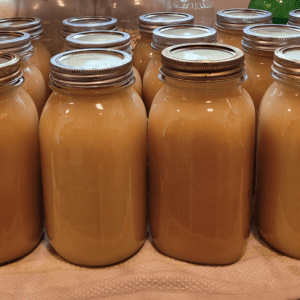
Applesauce Recipe
Equipment
- 1 stockpot.
- 1 water bath canner
- 8 pint jars, lids, and rings.
- canning supplies
Ingredients
- 12 lbs fresh apples, peeled, quartered, and sitting in lemon juice to prevent browning (drain before using).
- ½ cup water.
- 3 cups sugar.
- 4 tbsp lemon juice.
- 2 tsp cinnamon.
Instructions
Preparing the Apples
- Peel, core, and slice the apples.
Cooking and Mashing the Apples
- Simmer those apple slices until they're soft and mashable.
Filling and Sealing Jars
- Prepare the Jars: Wash the jars, lids, and rings in hot, soapy water.
- Rinse thoroughly to ensure they are clean.
- Fill the Jars: Using a canning funnel, ladle the hot applesauce into the jars, leaving about ½ inch of headspace at the top.
- Remove Air Bubbles: Slide a non-metallic spatula or chopstick around the inside of the jar to remove any air bubbles trapped in the applesauce.
- Wipe the Jar Rim: Using a clean, damp cloth, wipe the rim of the jar to ensure it is clean and free of any applesauce residue.
- Apply the Lid and Ring: Place a lid on top of the jar, then screw on the band until fingertip tight. Do not over-tighten.
- Process the Jars: Place the filled and sealed jars in a boiling water canner, ensuring they are fully submerged with water covering the jars by at least 1-2 inches.
- Bring to a Boil: Cover the canner with a lid and bring the water to a boil. Process the jars according to the recommended processing time for your altitude and jar size.
- Remove and Cool: Once processed, carefully remove the jars from the canner and place them on a towel-lined countertop. Allow the jars to cool undisturbed for 12-24 hours.
- Check the Seal: After cooling, check the seals by pressing down on the center of the lid. If the lid is firm and does not flex, the jar is sealed.
- Label and Store: Label the sealed jars with the date and contents, then store them in a cool, dark place for long-term storage.
- Enjoy your delicious homemade applesauce whenever you like!
Summary
I hope I have inspired you to stockpile your pantry for your survival needs.
If you were encouraged by this post, I invite you to check out my FREE Printables Page for fun free printables, planners, and charts.
ENTER MY FREE Printables Page HERE
Here are some more of my canning inspiration posts to check out!
Pears: How to Make and Can Salted Caramel Pear Butter
Butternut Squash: How to Make and Can Butternut Squash Butter
Quince: How to Make and Can Fall Spiced Quince Chutney
Quince: How to Can Quince
Carrot Cake Butter: How to Make and Can Carrot Cake Butter
Peach Pie Filling: How to Make and Can Peach Pie Filling
Pear Pie Filling: How to Make and Can Pear Pie Filling
The Best Winter Pantry Staples to Stockpile Now!
More Recipes!
Grapes: How to Make and Can Grape Jam
Apple Cider: How to Make Homemade Apple Cider Vinegar
How to Make and Can Cherry Plum Jam
How to Make and Can Apple Butter In Crockpot
Stockpiling Condiments for Survival: Learn How I Do It!
How to Make and Can Vegetable Pot Pie Filling
Easy Canning Applesauce Recipes to Stalk Your Pantry!
How to Make Peach Jalapeno Jam
Cherries: How to Make Cherry Pie Filling
Cherries: How to Make Cherry Syrup
Salsa: How to Make and Can Cherry Salsa
Peaches: How to Make and Can Peach Salsa
Canning Supplies You Need Now for a Successful Canning Season!
How to Make and Can Balsamic Onion Jam
Cranberry Sauce: How to Make and Can Old Fashioned Cranberry Sauce
How to Make and Can Cranberry Merry Jam
How to Make and Can Strawberry Shortcake Jam
Cherry Jam: How to Make and Can Cherry Pie Jam
Carrot Cake Jam: How to Make and Can Carrot Cake Jam
Quince Jam: How to Can a Year’s Supply of Quince Jam
Root Beer Float Jelly: How to Make and Can Root Beer Float Jelly
Blessings,
The Off Grid Barefoot Girl

